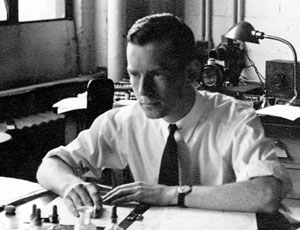
Dr Max Day AO FAA is a respected ecologist and entomologist whose scientific publications span 74 years. The last of his papers, on the biology of the Australian scribbly gum moth, was published when he was 97 years old. He worked with the famous CSIRO insect collection and was the first Chief of the CSIRO Division of Forest Research. Now in his 100th year (2015), Max is the Academy's oldest living and longest serving Fellow*.
(May 2015)
[*2017: Dr Max Day passed away on 31 July 2017]
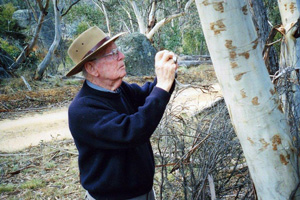
The most satisfying achievement for me was the work that Frank Fenner and I did on the myxomatosis virus—or ‘myxo’.
The government introduced myxo into Australia in 1950 to control rabbits as they had become a serious problem across the country. Frank, who I had never previously met, approached me at a meeting here in Canberra and said: “We believe myxomatosis might be mosquito-borne. Would you be interested in taking on the mosquito side of it while I do the biology?”. And so for the next five years Frank and I worked on the transmission of the myxo virus.
Myxomatosis ultimately had a major impact by reducing rabbit numbers and CSIRO was seen as the saviour of the land—nearly everyone in Australia knew about ‘myxo’.
I’m also proud of my work establishing the Division of Forest Research within CSIRO because Australia became recognised for its contribution to forest research throughout the world.
After I retired I enjoyed working with colleagues on scribbly gum moths. We found eleven new species of moths that produced scribbles on gum trees—not any gum tree, but a specific group of gums. We also discovered the larvae under the bark that was making the scribbles and uncovered a unique ecological interaction that occurs between the tree and the moth.
In the early days of CSIRO there was no Department of Science so CSIRO was the primary source of scientific advice to the Commonwealth Government. CSIRO was also a world renowned organisation producing some amazing scientific advances. The 1960s was a very significant period in what Fred White called ‘the Golden Age of CSIRO’. CSIRO was not just a pure research organisation; we were set up in order to assist Australian industry.
Sadly, today CSIRO seems to have lost that pre-eminence, and for a number of reasons, CSIRO has changed from being a world-leader to something much less, which is a great disappointment to me.
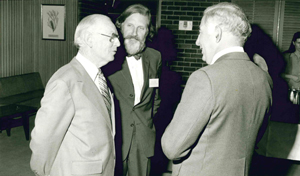
Science was not considered as an important subject at my school; Latin and the social sciences were seen as much more important. However, I had other opportunities outside school.
As a young boy, I had collected caterpillars and was taking them home in my hat. A student sitting opposite me on the train (who was Doug Waterhouse) saw them and said, “Oh, if you're interested in butterflies, my uncle knows all about them”. His uncle was the eminent entomologist G. A. Waterhouse, who after he retired early, devoted his life to the study of Australian butterflies.
G. A. Waterhouse was a marvellous man and extraordinarily good to me. Regularly he would take Doug and me insect collecting around the Sydney area. We would go north as far as the Hawkesbury River and south as far as Bulli. As kids we got to know the Sydney sandstone insect fauna very well but we also learnt about the distribution of insects and the plants they fed on. By the time I got to university, I had a pretty good knowledge of the biology of the Sydney Basin.
I really owe my start to G. A. Waterhouse—he was the one who told my mother that there was a job in science, that we should go to university and do entomology.
It would appear that all the sciences are becoming more and more specialised and that means that there is less opportunity now to see the big picture. I’d like to think that scientists of the future can also think broadly and put their specialisation into a broader context.
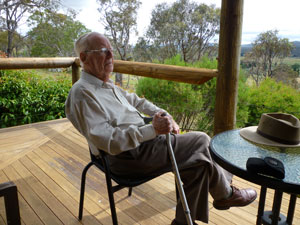
Frank Fenner was a very remarkable person, a superb collaborator and a close friend. He was an inspiration to me—initially for those years when we worked on myxomatosis, and then for the rest of Frank’s life, during which time he wrote many books.
Fred White, who was Chairman of CSIRO, was also a great inspiration and a great mentor. Originally a New Zealander, Fred had a vision for Australia’s future which was quite remarkable.
When Fred asked me to join the CSIRO Executive, I said “I really don't know a lot about research administration. I think I should do a course in public administration”, Fred just looked at me and said, “You don't know much about the job, do you? I want you to recognise good science, and when you see it, support it”.
To recognise good science was easy in entomology; but to do it in plant physiology, soil science, fisheries, and all the other areas which became my responsibility, was an entirely different matter. In addition to knowing something about each of the sciences and recognising good science, you also had to know something about all the industries that those divisions were serving—wheat, cotton, anything that was going.
Incidentally, Fred also taught me a lot about public speaking. One evening he put me on the spot and without any warning, announced I needed to address the dinner that we were both attending. I wasn’t used to public speaking, but I quickly recognised the power of humour to engage an audience. Fred had ordered soup to start the meal but it never arrived. So I started my speech with: “You’ve all had an opportunity to see the authority of the Chairman of CSIRO. He demands soup and he gets spaghetti!”
Today, I can’t help but admire someone like Steven Hawking. He is a remarkable chap with a disability who rises above that disability. I find that incredible.
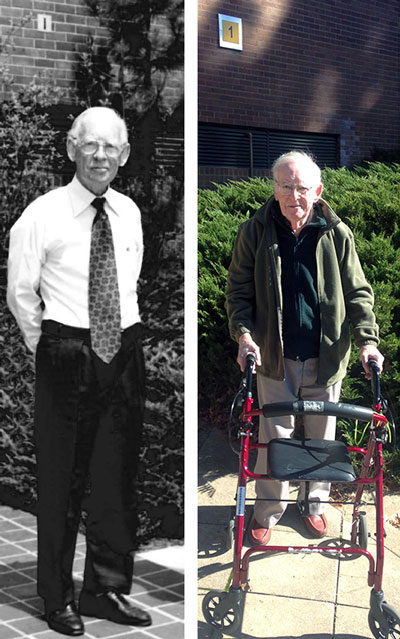
© 2026 Australian Academy of Science